Pelvic floor massage is a powerful therapeutic technique that supports your body from the inside out.
Whether you’re experiencing pelvic pain, tension, or recovering postpartum, learning how to massage the pelvic floor muscles can dramatically improve your quality of life.
While often overlooked, the pelvic region plays a crucial role in bladder and bowel control, sexual function, and core stability.
In this guide, we’ll explore everything you need to know about pelvic floor massage and pelvic massage, including their benefits, when to try them, self-massage techniques, and when it’s best to consult a pelvic health therapist.
Table of Contents
Anatomy of the Pelvic Floor Muscles
The pelvic floor muscles are a group of interconnected muscles located at the base of the pelvis. They play a crucial role in supporting pelvic organs, maintaining continence, and promoting good posture. These muscles include:
| Muscle | Origin | Insertion | Function |
|---|---|---|---|
| Pubococcygeus | Pubic bone | Coccyx | Supports pelvic organs, aids continence |
| Iliococcygeus | Ischium | Coccyx | Supports pelvic structures, maintains continence |
| Puborectalis | Pubic bone | Rectum | Forms a sling around the rectum, aids in bowel control |
| Iliorectalis | Ischium | Rectum | Supports pelvic organs and helps with continence |
Pelvic Floor Massage can help release tension, improve continence, enhance posture, and promote overall pelvic health.
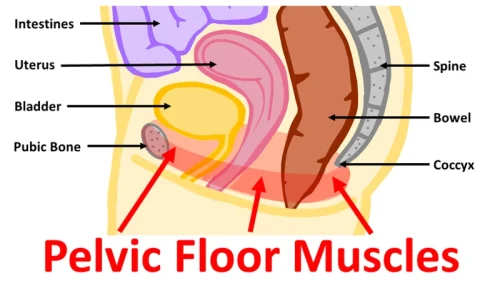
What Is Pelvic Floor Massage?
Pelvic floor massage is a form of manual therapy focused on releasing tension, trigger points, and fascial restrictions in the pelvic floor muscles.
These muscles sit like a sling at the base of your pelvis, supporting your bladder, uterus or prostate, and rectum.
Unlike a general relaxation massage, pelvic massage can be:
🌍 External (around the hips, glutes, sacrum, thighs)
🌀 Internal (via vaginal or rectal access)
It may involve gentle pressure, myofascial release, trigger point therapy, or stretching.
This technique is especially helpful for those needing pelvic trigger point release, where tight muscle knots are gently deactivated to relieve pain.
Trained pelvic floor therapists can perform internal work, but many people also learn how to self-massage safely at home.
🧠 According to the Cleveland Clinic, pelvic floor physical therapy can be highly effective for addressing tightness, pain, and incontinence.
Benefits of Pelvic Floor Massage
When done correctly, pelvic floor massage offers a wide range of physical and emotional benefits.
These include:
🌸 Reduces chronic pelvic pain
🌿 Relieves muscle tension and tightness
💧 Improves bladder and bowel control
👶 Supports postpartum healing
💞 Enhances sexual comfort and arousal
❤️🔥 Improves blood flow and tissue oxygenation
🧘 Promotes nervous system relaxation
By targeting adhesions or overactive muscles, pelvic massage can improve mobility, ease tension, and restore balance to the entire core and hip region.
💡 A 2021 study in the Journal of Women’s Health Physical Therapy supports pelvic floor massage and manual therapy for improving function and reducing pelvic pain.
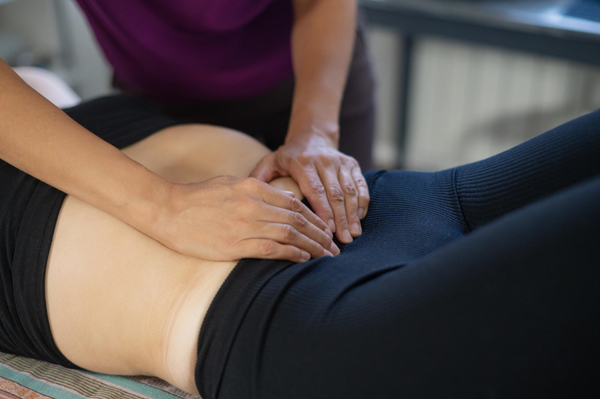
Emotional and Psychological Benefits
Pelvic floor dysfunction isn’t just physical—it can carry emotional and psychological weight too.
For people dealing with chronic pelvic pain, incontinence, or sexual discomfort, massage can restore a sense of control and connection with the body.
It can support trauma recovery by gently building trust in physical touch.
Regular pelvic massage encourages relaxation, activates the parasympathetic nervous system, and supports emotional healing by reducing anxiety, fear, and body tension.
Massage therapists trained in trauma-informed care can offer a compassionate and nonjudgmental space for this deeply personal work.
Conditions That Benefit from Pelvic Floor Massage
Pelvic floor dysfunction can affect both women and men, and often goes untreated due to stigma or lack of awareness.
Massage can help manage:
💥 Vaginismus treatment (involuntary vaginal tightness)
🔥 Vulvodynia (chronic vulvar pain)
🚽 Interstitial cystitis or bladder pain syndrome
🌕 Endometriosis-related pelvic pain
💔 Dyspareunia (painful intercourse)
🧔 Prostatitis and chronic pelvic pain syndrome
💩 Constipation and bowel strain
🦴 Tailbone pain (coccydynia)
👩🍼 Postpartum pelvic trauma or scar tissue
Whether you’re managing discomfort or working through physical therapy, regular pelvic floor massage can make a meaningful difference in daily life.
📘 The International Pelvic Pain Society recommends multidisciplinary care, including manual therapy, for chronic pelvic pain.
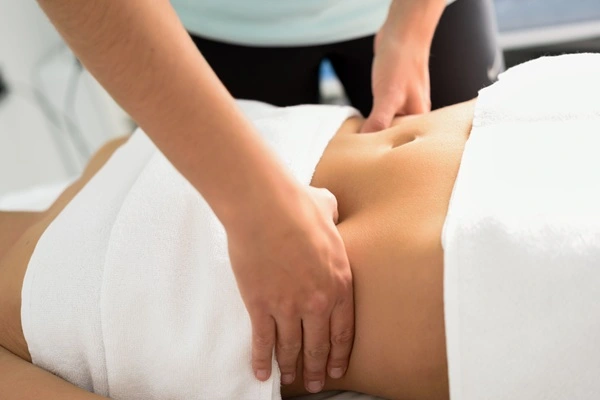
Postpartum Recovery and Pelvic Massage
Childbirth can place enormous stress on the pelvic floor.
Tearing, episiotomies, cesarean birth, and general muscle strain all impact this area.
Pelvic floor massage can:
👶 Relieve scar tissue adhesions
🧼 Improve circulation to promote healing
🧘 Ease discomfort during postpartum intimacy
🤱 Support hormonal and physical recovery
Working with a pelvic floor specialist in the postpartum period can speed healing and help rebuild confidence and function after birth.
Sexual Health and Pelvic Massage
Tension in the pelvic floor is a common cause of sexual pain, reduced arousal, and difficulty reaching orgasm.
For all genders, pelvic massage can:
🔥 Increase blood flow and tissue responsiveness
💞 Reduce involuntary muscular contraction during intimacy
🧘 Foster safety and comfort in the pelvic region
🔄 Improve awareness of sensation and release
It may also help reduce pain associated with vaginismus, prostatitis, and other arousal-related discomforts.
Sexual health is a part of holistic well-being, and pelvic massage supports this with noninvasive, therapeutic care.
How to Massage Pelvic Floor Muscles: Step-by-Step Guide
External Pelvic Massage
This is the starting point for most people.
External massage focuses on surrounding muscles and fascia, including:
🦵 Inner thighs
🍑 Buttocks and glutes
🦿 Hip flexors
🌀 Sacrum and lower back
🫃 Lower abdomen
Technique:
🛏️ Lie on your back or side in a quiet, comfortable room.
👐 Apply light pressure with your hands, a massage ball, or tool.
🔄 Use slow, circular or gliding motions.
🌬️ Breathe deeply to help the muscles relax.
📍 Focus on areas that feel tender or tight for 1–2 minutes.
Internal Pelvic Floor Massage (Vaginal or Rectal)
Internal massage targets the levator ani, obturator internus, and other deep muscles.
It can be highly effective for treating pelvic pain and improving muscle function, but it must be done gently and mindfully.
Preparation:
🧼 Wash your hands thoroughly.
✂️ Trim nails and use a latex/nitrile glove if preferred.
🧴 Apply water-based lubricant.
🚻 Empty your bladder beforehand.
🕯️ Create a relaxed space—dim lights, calm breathing, supportive pillows.
Technique:
👉 Insert one lubricated finger about 1–2 inches into the vaginal or rectal canal.
🌀 Gently sweep along the inner walls in a “U” or clock face pattern.
⏸️ Pause on tender points and apply gentle pressure for 30–60 seconds.
💫 Focus on “melting” tension—this is not about pushing hard.
🔄 Switch sides and repeat as needed.
⛔ Always stop if there is sharp pain or emotional discomfort.
Aftercare Tips
🚫 Avoid Strenuous Activities – Refrain from intense exercise for at least 24 hours.
💧 Stay Hydrated – Drink plenty of water to help flush out toxins.
❄️ Use Cold Therapy – Apply an ice pack if you experience any soreness.
🛁 Take a Warm Bath – Helps further relax the muscles.
🚫 Avoid Alcohol & Caffeine – Reduces inflammation and promotes better recovery.
😴 Rest & Relax – Allow your body time to adjust post-massage.
📅 Schedule Regular Sessions – Routine massage sessions can help maintain pelvic muscle health.
Precautions for Pelvic Floor Muscle Massage
⚠️ Be Gentle – Excessive pressure can cause discomfort.
⚠️ Use Lubrication – Reduces friction and enhances comfort.
⚠️ Avoid Pressure Points – Work around sensitive areas.
⚠️ Stop if Pain Occurs – Discontinue massage if you feel discomfort.
⚠️ Seek Professional Help – Consult a specialist if unsure about proper techniques.
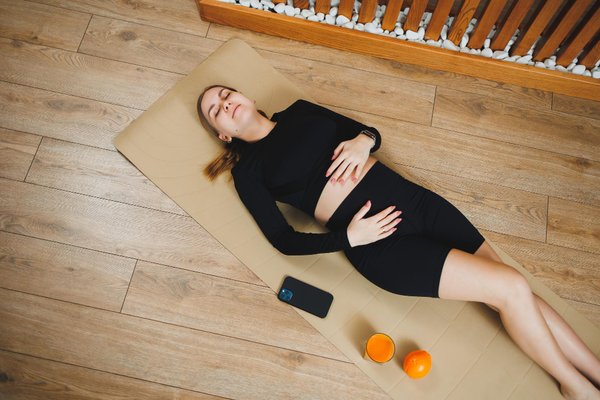
When to See a Pelvic Health Therapist
Consider consulting a pelvic floor therapist if:
⚠️ Pain worsens with self-treatment
🔥 You experience nerve symptoms (burning, numbness)
👶 You’re recovering from surgery or childbirth
📉 You suspect prolapse or significant dysfunction
🫂 You need trauma-informed care or emotional support
Tools to Support Pelvic Massage
| Tool | Use | Best For |
|---|---|---|
| 🪄 Pelvic Wand | Internal massage | Reaching deep trigger points |
| ⚾ Massage Ball | External massage | Muscle tension in glutes, hips |
| 🧽 Foam Roller | Myofascial release | Hip flexors, thighs |
| 💧 Lubricant | Reduces friction | Comfort and safety |
| 🔥 Heating Pad | Before massage | Relaxing tight muscles |
Always sanitize internal tools after use. Start gently and stop if pain increases.
Pelvic Floor Massage vs. Kegels
Many people assume Kegels are the gold standard for pelvic floor health—but this isn’t always true.
Kegel exercises strengthen muscles, but if your pelvic floor is already tense or overactive, Kegels can make it worse.
By contrast, pelvic massage releases tension and promotes balance before introducing strengthening.
For those with hypertonic pelvic floors, massage, breathwork, and sometimes reverse Kegels are more appropriate.
Combining both—relaxation techniques and functional strengthening—often yields the best long-term outcomes.
Tips for Success: Making Pelvic Massage a Routine
🕒 Start with short, gentle sessions (5–10 minutes)
🌬️ Incorporate deep breathing
📆 Stay consistent—2–3x per week is ideal
📝 Track symptoms or progress in a journal
🫶 Pair with stretches or pelvic physical therapy exercises
💬 Always stop if something doesn’t feel right

FAQs
💬 Can I do pelvic floor massage every day?
Start 2–3x per week. Some may tolerate daily massage, but overuse can irritate sensitive tissue.
💬 Can pelvic massage be painful?
A little discomfort is normal at trigger points, but it should not be sharp or lingering.
💬 Is pelvic massage safe during pregnancy?
With clearance from your provider, yes—especially in the third trimester for perineal massage.
💬 Can I use a pelvic wand myself?
Yes, but go slowly, follow instructions, and seek guidance if unsure.
💬 Should men do pelvic massage?
Absolutely. It’s useful for relieving tension, pain, and improving pelvic awareness and function.
Also Read:
👉 What Is Thiele Massage? A Complete Guide to Pelvic Floor Therapy
👉 How to Use a Prostate Massager: Health Benefits, Safety, and Product Reviews
📚 References
- Cleveland Clinic. (n.d.). Pelvic Floor Dysfunction
- Healthline. (2022). Pelvic Floor Dysfunction
- Journal of Women’s Health Physical Therapy. (2021). “Effectiveness of Manual Therapy on Female Pelvic Floor Dysfunction”. NIH Article
- International Pelvic Pain Society. https://www.pelvicpain.org
- American Physical Therapy Association – Pelvic Health Section. https://www.aptapelvichealth.org
- Verywell Health: Levator Ani Syndrome
- WebMD: Pelvic Floor Muscles Function and Dysfunction
⚠️ Disclaimer:
This article is for informational purposes only and does not constitute medical advice. Always consult with a licensed healthcare provider or certified massage therapist before beginning any new treatment, especially if you have pre-existing health conditions or concerns.

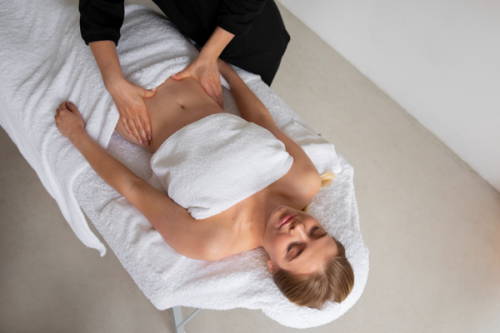






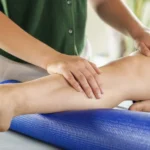

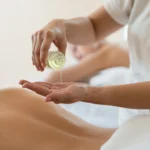

Great post.